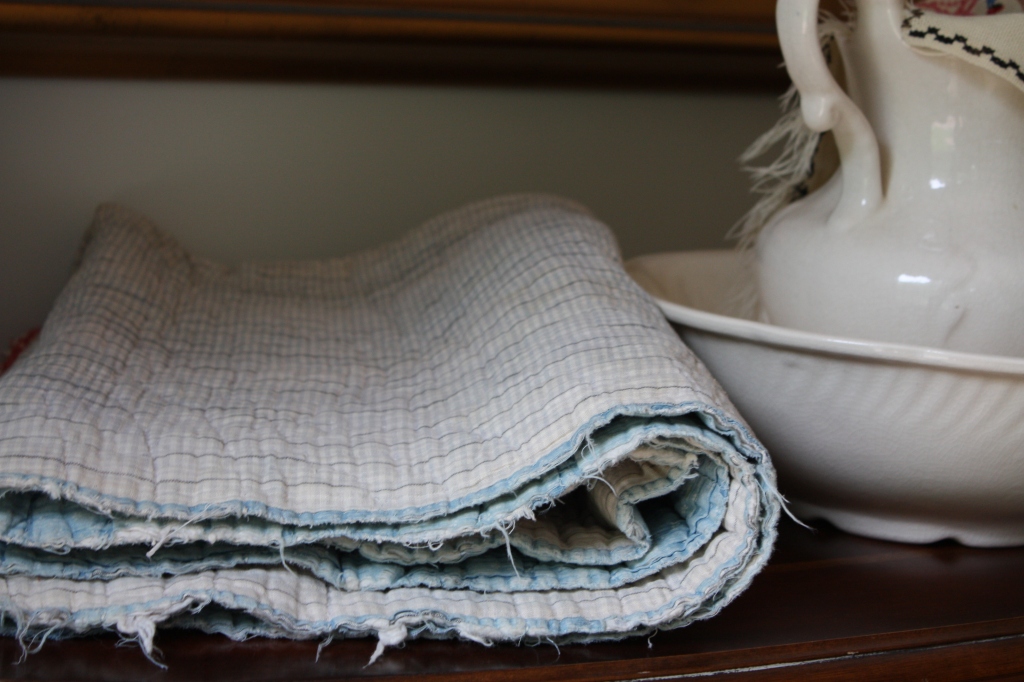I love fabric. I love quilting. I love history. A friend of mine stumbled on an old quilt but didn’t have much interest in it and it ended up in my hands. My hands are very happy to have it.
This treasure, waiting to be unfolded.
 I’ve learned quite a bit about fabrics and the tradition of quilting.
I’ve learned quite a bit about fabrics and the tradition of quilting.
 I learned that the romantic idea of Colonial women quilting in the winter by the fire is really just a romantic idea. Because of poor lighting, most quilting took place during the summer months when there was more natural light. Most bed coverings were woven from wool or linen, so quilting to provide warmth probably didn’t take place very much. I think I respect those hardworking Colonial women even more for quilting during the hot summer months.
I learned that the romantic idea of Colonial women quilting in the winter by the fire is really just a romantic idea. Because of poor lighting, most quilting took place during the summer months when there was more natural light. Most bed coverings were woven from wool or linen, so quilting to provide warmth probably didn’t take place very much. I think I respect those hardworking Colonial women even more for quilting during the hot summer months.



I learned that during the 1920s and 1930s, quilting became very popular. Magazines printed the latest quilt block patterns. At first, fabrics were colonial reproductions, but during the mid 1920s, a shift to light and bright colors came.


I love that tradition.
After doing a lot of reading and researching, I’m guessing that this quilt was made sometime during the 20s. It is entirely hand pieced and hand quilted. The backing and some of the quilt square fabrics are, I think, feed sack fabric. It has been lovingly repaired in a couple of places.
It’s a crib sized quilt. Perhaps it was made for a child born in July. Or maybe it was made for a baby whose father was a soldier during WWI or WWII. I wonder about the hands that stitched this quilt together, and I wish the make signed it or dated it somehow.
I’ll be making sure I sign and date the quilts I make from now on.
As much as I’d love to keep this, it is for sale at the School House Antique Mall. Wouldn’t it make a beautiful wall hanging?

